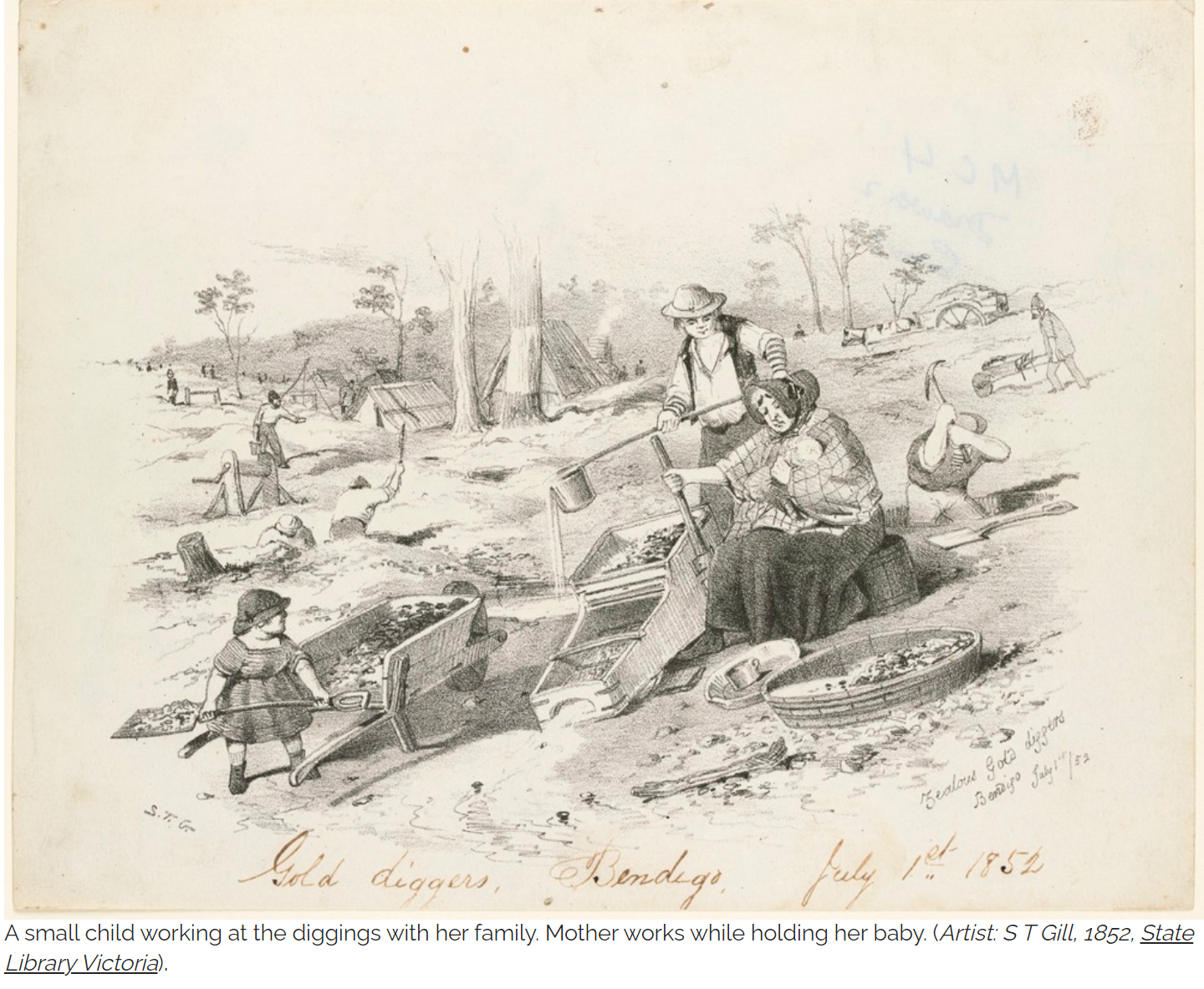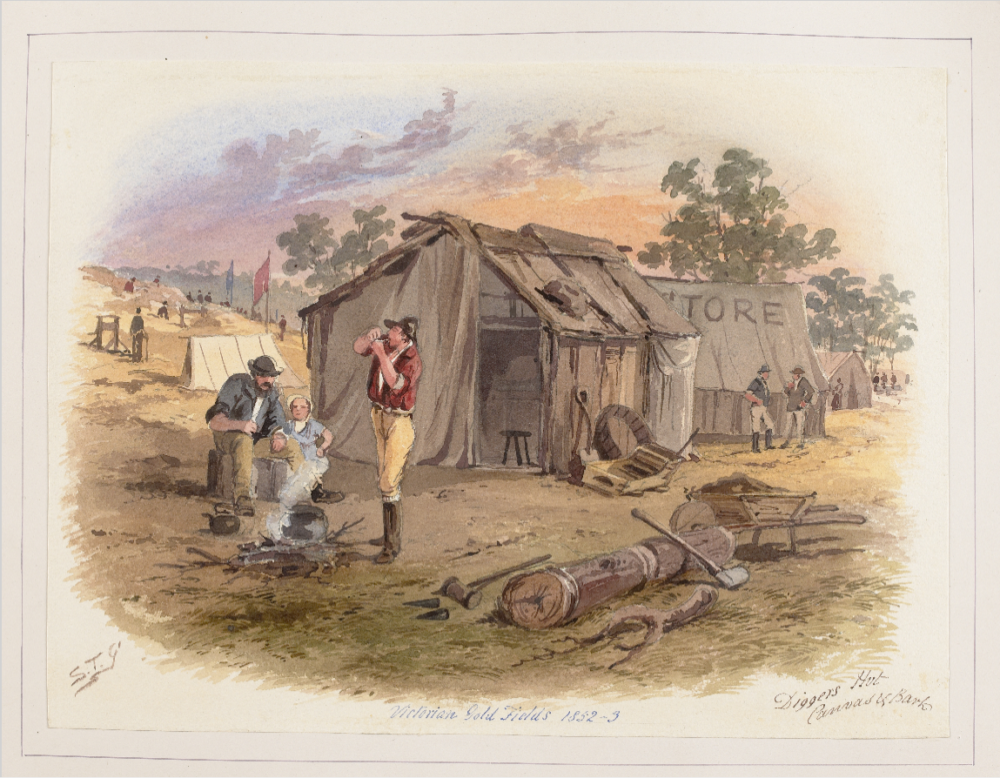Were My Ancestors Ever Children?

Childhood! The topic for a family history writing exercise. Childhood – how had I never thought of it. How had I jumped from ancestors are born to ancestors are grown up?
Yes of course childhood sometimes pops up, children attached to the record of a parental activity – such as sailing across the world. Beyond that no – I had not thought about a real child, with a real little life.
Childhood and growing up across the centuries. Why not take a little look and see? “What did children do on the goldfields of Victoria in the 1860s?” I asked a question that directly related to my ancestors. With that one question. a rabbit hole of quite significant proportions was created. Down I went, and it may continue for many hours – the understanding has only just begun.
As I read, I discovered why I might have left the childhood bit out. It was often not safe, not happy, not comfortable, and certainly not healthy.
For the children on the goldfields, they were often treated as mini-adults; working in wet and cold conditions, panning for gold, or shovelling mud and clay. The climate was harsh. Hot, windy, and dusty conditions in summer. Icy cold, wet, and damp in winter.
Growing up children were likely used to the smell of daily life on the goldfields. A smell our modern nose would likely find intolerable. The pungent nose tingling smell of rotting waste – of people, livestock, diggings. Rotting carcasses, human waste creating not just a putrid scent but a seat for many diseases. Diseases children were prone to and unavoidable living closely with so many others.[1]
How did any child live to adulthood? Dangers abound – falling down mine shafts, trodden on by horses, injured in the course of work, drowning, snake bites and other hazardous wildlife. All these dangers appear minor when considering the cocktail of lethal diseases – Influenza, Scarlet fever, Rheumatic fever, Tuberculosis, Diphtheria, Cholera, Typhoid and even Smallpox. [2]

Home was likely to be a small quickly erected hut combining canvas and whatever wood might be available or often a tent. A community of closely erected dwellings in amongst the workings of the goldfields.
In the 1850’s and 1860’s children on the Victorian goldfields of Australia rarely had schooling. If they did teachers were often unskilled – I read a description of one teacher being 14years old! [3] Even wealth did not guarantee education. Not until the 1870’s was education compulsory and for children on the goldfields this mean little.
For me the research needed to understand more clearly the concept of childhood for my ancestors has just begun. A thought bubble that needs expanding yet even now the resilience of each child who survived these years is extraordinary to consider. [4]
[1] State Library Victoria, ‘Childhood and Conditions Golden Victoria’. http://ergo.slv.vic.gov.au/explore-history/golden-victoria/life-fields/conditions (accessed Sep. 27, 2021).
[2] ‘Childhood in the 1850s’, Sovereign Hill Education Blog, Nov. 01, 2016. https://sovereignhilledblog.com/2016/11/01/childhood-in-the-1850s/ (accessed Sep. 27, 2021).
[3] ‘Children on the goldfields’, p. 4.
[4] ‘Children of the Victorian Gold Rush’. https://www.goldfieldsguide.com.au/blog/24/children-of-the-gold-rush (accessed Sep. 27, 2021).
I have been down this particular rabbit hole. My 2XGreat Grandparents, Ann Kinnoch and Samuel Perkins walked from Geelong to Ballarat in 1853/4. They first camped at Eureka where Ann hid her 5 month old son down a mineshaft to protect him from police bullets at the Eureka Stockade. Ann gave birth to 11 children in 14 years and 4 of her children died as babies. Her daughters, Margaret at 1 year and Mary at 3 months. Then two years after Mary’s death Ann gave birth to twin girls and named them Margaret and Mary, again. Sadly Mary died at birth, however, Margaret lived to be 82. She never married and lived with her parents all her life being their only surviving daughter.
Wow it is incredible to imagine the life Ann would have had – well all the family but I can’t imagine giving birth to children and seeing them die, let alone the conditions. Amazing story. Melanie